Milongas in Buenos Aires
Apr 29, 2023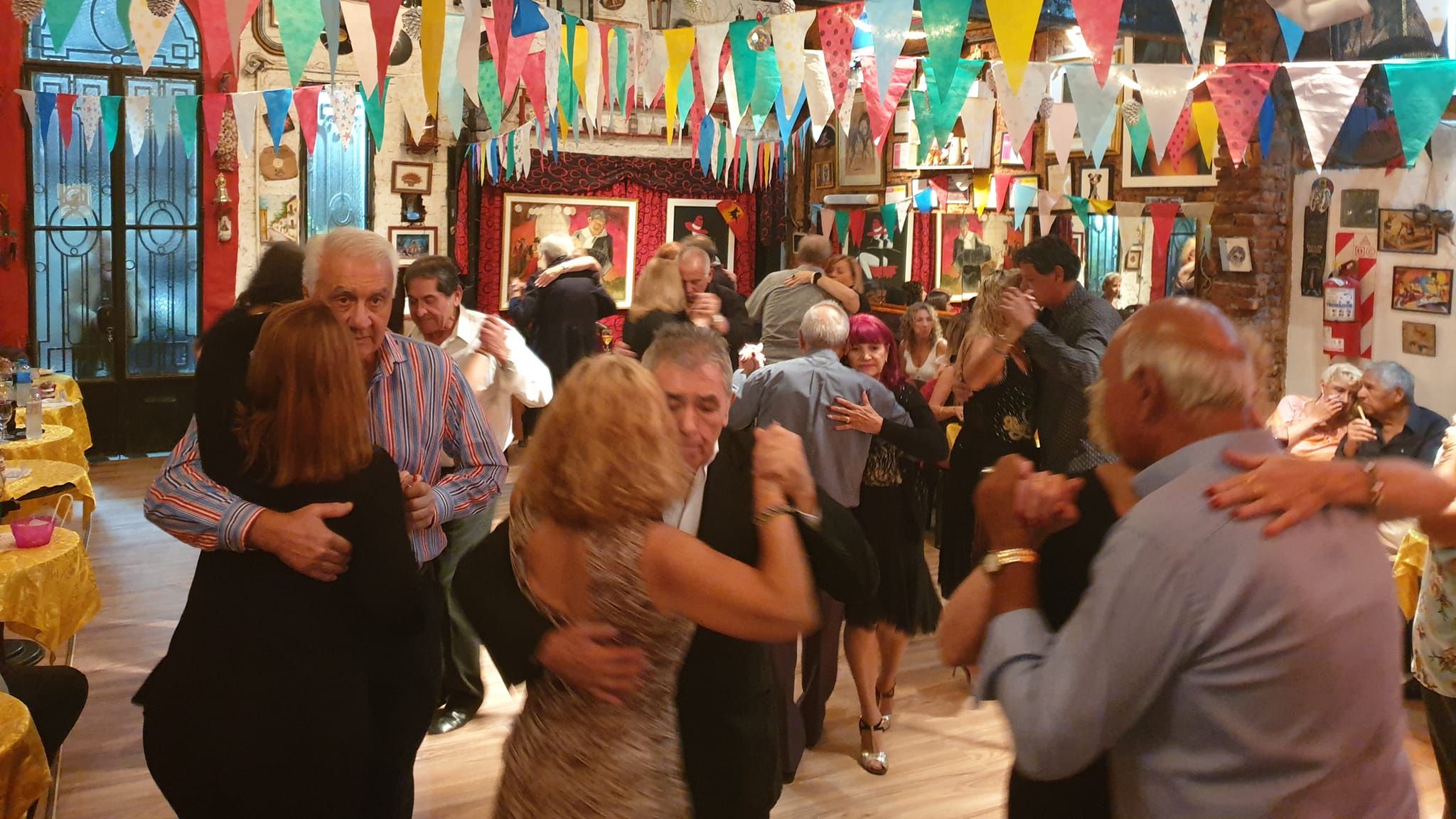
by Mariano Díaz Campos
Saludos Tangueros
From Buenos Aires I am sending you my Saludos Tangueros! I am currently visiting my birthcountry, Argentina. I still have my Argentine nationality and DNI.
My previous visit to Argentina was in 2018, when I travelled with my mother to her birthtown Tapalqué; the town where she grew up, where her father (my grandfather) had his milonga, and where I was baptized. We visited the church in Tapalqué where I was baptized. We met many family members that I had not met before. In March 2023 my mother Mirta Campós was honoured by the Municipalidad de Tapalqué as cultural ambassador in the world, and was recognized for her career as a dancer and agent of tango and the Argentine culture.
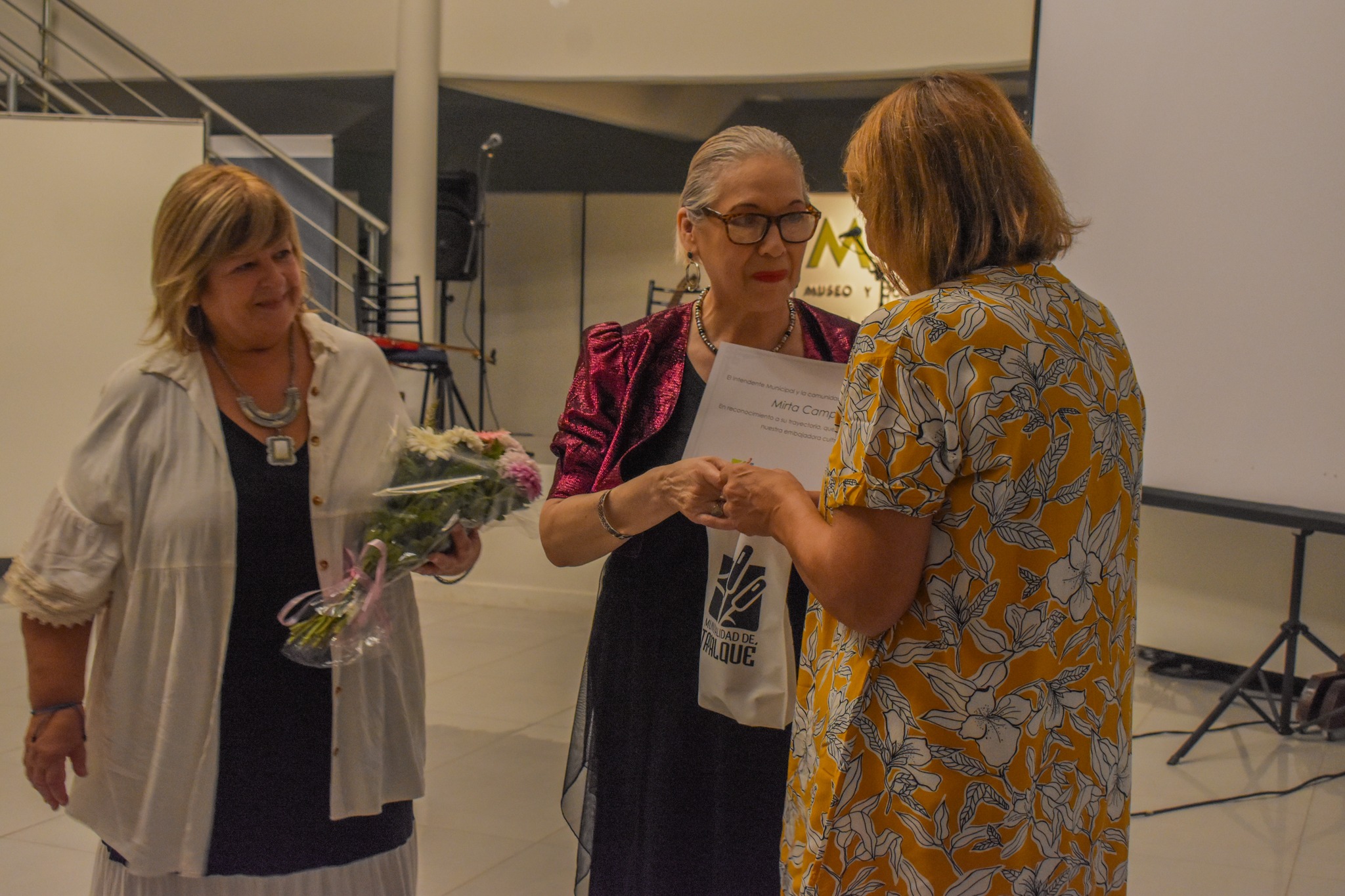
Recognition to Mirta Campos for her cultural embassy around the world. Tapalqué, 2023.
Hommage to Osvaldo Pugliese
During my visit in 2018 Lydia Pugliese invited me spontaneously on the stage to perform at the Hommage of Osvaldo Pugliese to dance with the Orquesta de Tango de Avellaneda. I invited Sofí Deluchi with me on the stage, with whom I had danced before at a milonga.

Performance with Sofí Deluchi, with Orquesta de Tango Avellaneda. Buenos Aires, 2018.
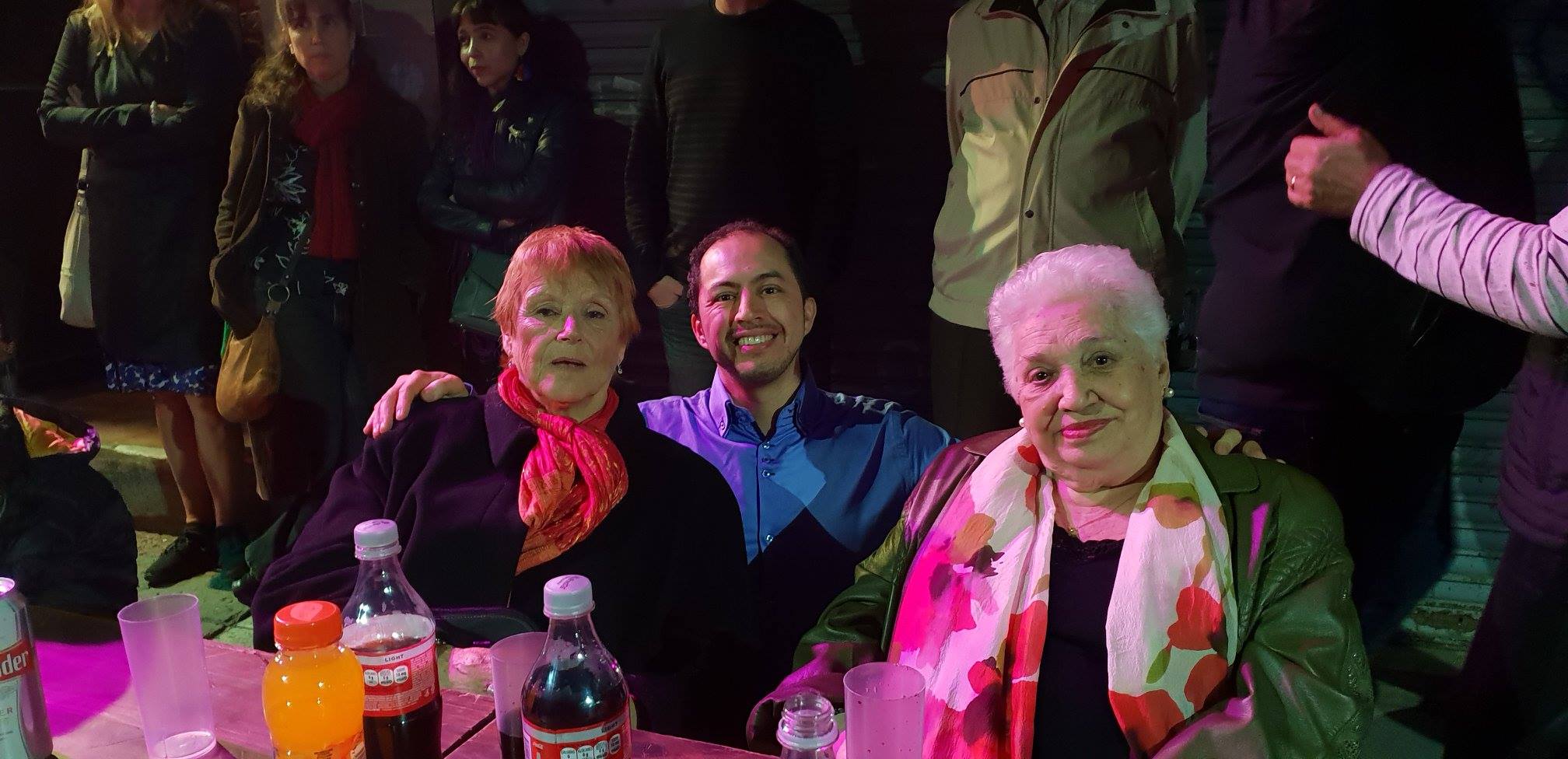
With Rita Ruggiero, the widow of Osvaldo Ruggiero (bandoneonist) and Lydia Pugliese. Buenos Aires, 2018
Salón Canning
A few years before, in 2014, I visited Buenos Aires together with Cosima. We spend time with my family, we danced a lot at the milongas, and we were invited to perform a tango show in the legendary Salón Canning Milonga Parakultural. Salón Canning is now closed for tango for good, like many other legendary tango locations.
Improvised performance by Mariano y Cosima at Salon Canning, Milonga Parakultural. Buenos Aires, 2014.
Beneficio
Going back in time, four years before, in 2010, we also visited Buenos Aires. We organised a group trip to the Capitál. This was organised as a beneficio. We donated the sum of the payments of all participants to an orphanage. It was recommended to pay in natura, so we bought all the expensive materials that the orphanage needed: soap, tooth brushes, tooth paste, laundry detergent, and so much more. We hired a small truck and brought it to the orphanage. We did not want to earn any money with this trip, because we are living in luxury compared to most of the Argentine people. We always feel at unease when we hear tourist brag about their shoe shopping, not mentioning all the poverty... the begging children in the streets.
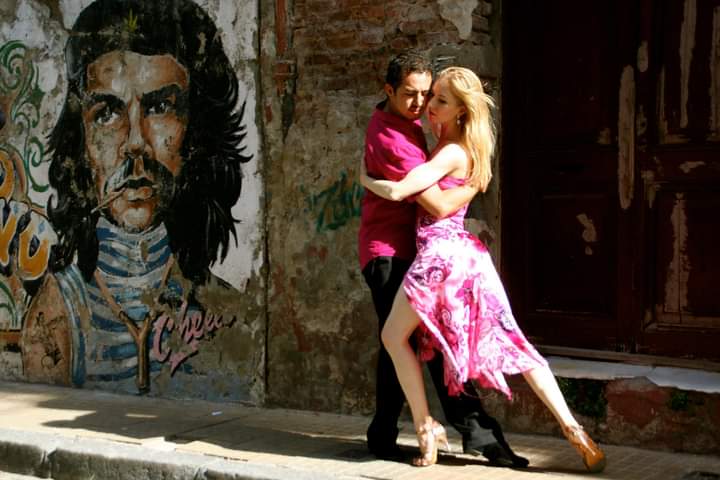
Buenos Aires, 2010. Photo by Piet Veerman.
Before this group trip we went to Buenos Aires together in 2004, to visit my family and to dance tango. In 2002 I visited Buenos Aires together with Cosima, for her that was the first time. In those days a blond Dutch girl dancing tango like the locals, with all the fast adornos that Cosima is known for, and with the real tango abrazo, was still very rare and special. We were certainly standing out when we visited milongas together.
From crisis to crisis
A year earlier, in December 2001, I had also visited Buenos Aires. I landed exactly on the day of the big financial crash. Total chaos. So much poverty. So much unsafety.
Argentina goes from crisis to crisis, the population never gets a break. Currently, April 2023, 39% of the Argentine people live in poverty, that is 18 billion human begins living in poverty, of the 46,3 billion inhabitants of Argentina. The hyperinflation of over 100% per year causes a lot of problems, both socially and economically.
From being banned, to tourist in my own country
I was born just two years before the dictatorship started. After a difficult and scary time, my parents were blessed to be banned from the country, together with me, and we were send on a plane to Europe. We were welcomed by The Netherlands as political refugees. My first memory of feeling safe is the smell of the pine trees, because our refugee camp was in the woods of The Netherlands.
After the dictatorship ended it was still unsafe for us to go back. When it was finally safe, and we went back to Argentina, we went there with a group of Dutch tangodancers, students of my parents. Tango was our culture, and while in Argentina tango was becoming more and more a distant memory of the old generation, meanwhile in Europe the revival of tango started, thanks to the refugees who brought tango dance, music and culture. This is the time, in the 80s, when I would visit milongas in Buenos Aires as a child. Any milonga we entered, we were received as royals. My parents were very famous in the tango, and every organisor would be so happy to invite them. I saw the child prodigees performing the choreographies of Antonio Todaro, I saw the old milongueros dance, improvise and perform, being cheered on by their friends. At that time I had no idea yet how unique my experience was, and how it would shape me as a dancer and artist.
At age 18, in 1992, I decided I wanted to start a professional carreer as a dancer. I packed one bag and left to Buenos Aires. The one person who guided me in this very competitive and small world of tango was maestro Pepito Avellaneda. The other young dancers were focussed on their own carreer. When I went to a music store and asked for tango, they would stare at me and laugh. Since the early 2000s we have seen an explosion of the popularity of tango worldwide, especially in Europe, Asia, South America and North America.
Salón Gricel
Salón Gricel is one of the legendary milongas of Buenos Aires. This milonga is very authentic, popular by both Argentine dancers and tourists - amatures and professionals alike. Beautiful tandas of tangos, milongas and valses are alternated by dance sets of zamba, chacarera, cumbia and rock 'n roll. I felt very welcome and at ease at this milonga, and enjoyed the dances a lot.
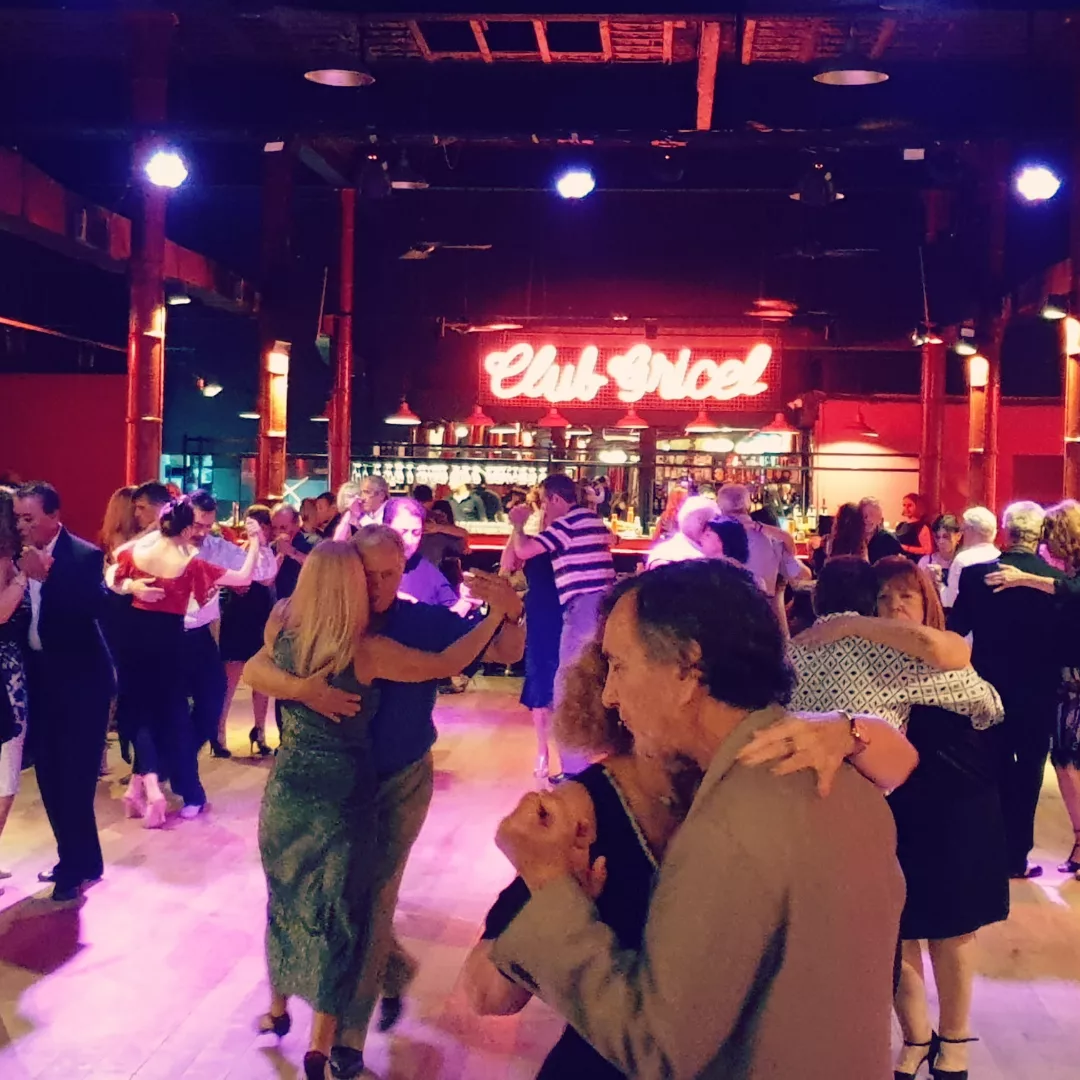
Club Gricel. Buenos Aires, 2023.
At Club Gricel I met one of the most elegant dancers of today: Demian García. We have know each other since about 25 years. It was wonderful to meet him again.
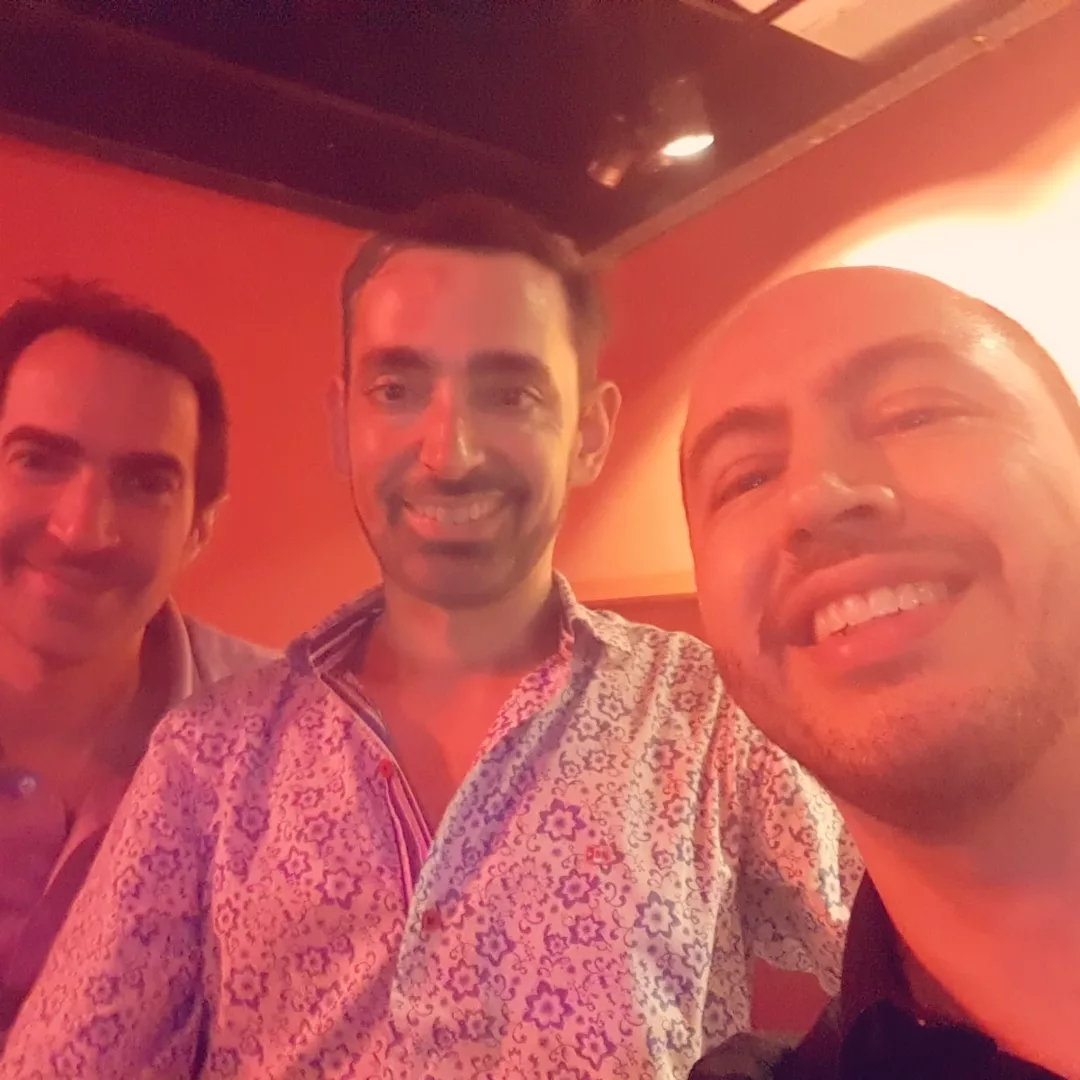
With Demian García at Club Gricel. Buenos Aires, 2023.
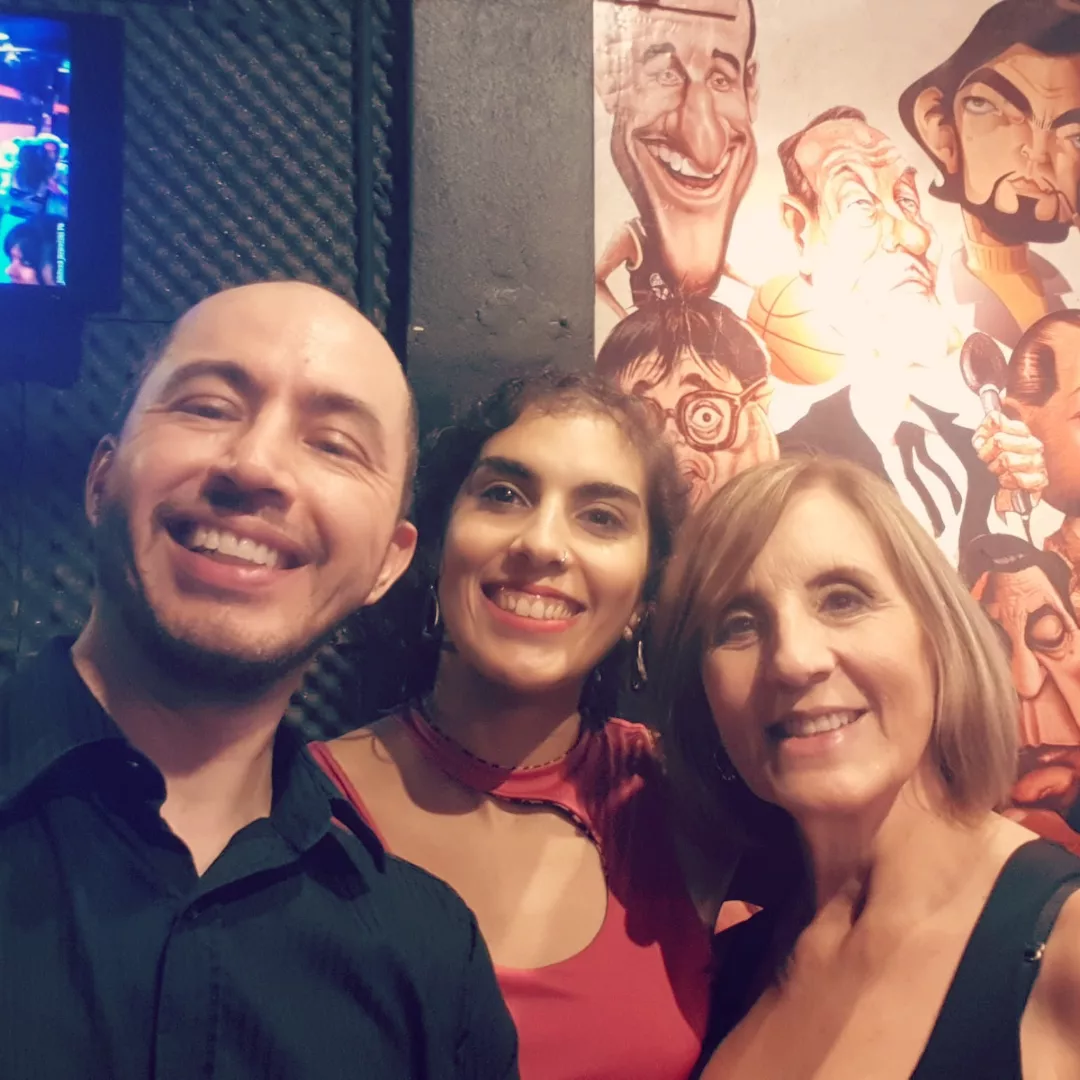
With Sofí Deluchi and her mother. Organisers of the milonga in Club Gricel. Buenos Aires, 2023.
Five years ago I spontaneously invited Sofí to perform with me at the Hommage of Osvaldo Pugliese's birthday celebration.
Table placement in milongas
The tango community in Argentina suffered a lot from the coronacrisis, and many places could not remain reserved for tango. And after that came the hyperinflation of over 100% per year. Still, tango survives.
Now let me tell you some of my lighter experiences of visiting the milongas in Buenos Aires. I visited a milonga and I had not made a reservation. I knew what would happen. Milongas are 'placed', meaning you make a reservation, and the organiser will choose a table for you. When you have not reserved, you will be placed far from the dance floor, somewhere in a corner. And even if you make a reservation: there is a hierarchy. The most 'important' dancers will get the best spots, close to the dance floor. Without a reservation, I was placed, as expected, far away in a corner. How lucky I was to meet a family tango friend, the amazing dancer Aurora Lubiz, who invited me to her table. I have know Aurora since I was a child. She was one of the most famous couples of the 90s, and she still has a very succesful carreer worldwide. Of course, front line at the dance floor. And dancing with the maestra gave a me a free pass to have my cabeceo's accepted with the other tangueras.
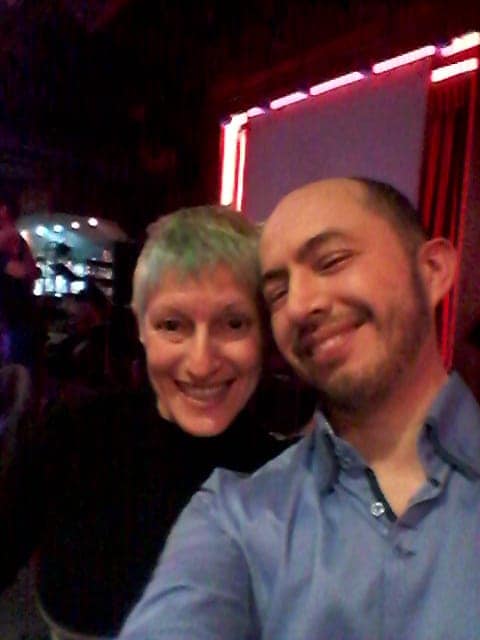
With Aurora Lubiz at Milonga Parakultural. Buenos Aires, 2023.
Cabeceo
What is common for the men to find a cabeceo, is to walk aroundin the back. This way they can get a cabeceo even if their table is at an unstrategic location. As many gentleman who have visited Buenos Aires will know, getting an acceptation of the cabeceo of Argentine tangueras is not easy when you are new at a milonga and you have not danced yet. Dancers will not take the risk to dance with someone they don't know of haven't seen dance. But as soon as you have danced, and your dance is appreciated, your invitations will be answered. Refusing of cabeceos is very common in Buenos Aires, and only when leaders accept refusals the system works. In Europe it happens a lot that leaders don't 'get it' and keep inviting a follower who has refused them by looking away. I don't say it is easy, nothing is easy in tango. Tango is complex, tango is life. At least this way both roles have an equal saying in who dances with who.
Ronda
As I was used to, the ronda is great in the milongas in Buenos Aires. I feel so relaxed and safe. On the contrary, at many milongas in Europe I feel very stressed. I am a very social dancer, and when I notice that the 'good' dancers just take up all the space they can get, I freeze, and the joy of dancing vanishes quickly. I like the freedom that the good ronda gives each dance couple. Space to dance well, creative and musical, with the chance to dance to the music, to pause and play.
Many milongas have live concerts and dance performances. Last week I visited Milonga Parakultural at the new location, and Tanghetto played live! It is wonderful to see the tango culture stay alive by constantly new talent, in music, dance, poetry.
Club Milongas
Together with my family I visited milongas outside the city, that no tourist visits. These milongas remind me a lot of the milongas of the old days, like I remember it from the first milongas I visited as a child. More like the social club with family vibes. There will be half an hour of rock 'n roll or folklore, and all the dancers you will meet are from the town, from Argentina. Contrary to the wellknown, popular milongas in the city centre; there you will dance with dancers from all around the world. You will not have long 'breaks' for rock 'n roll or chacarera (shorter and less often). These milongas are also regularly visited by professional dancers, so you have a mix of national and international professional dancers and amatures. Visiting the milongas outside the city, was a wonderful experience for me, and a it took me back down memory lane. I am so grateful that the tango culture has become so popular all around the world. 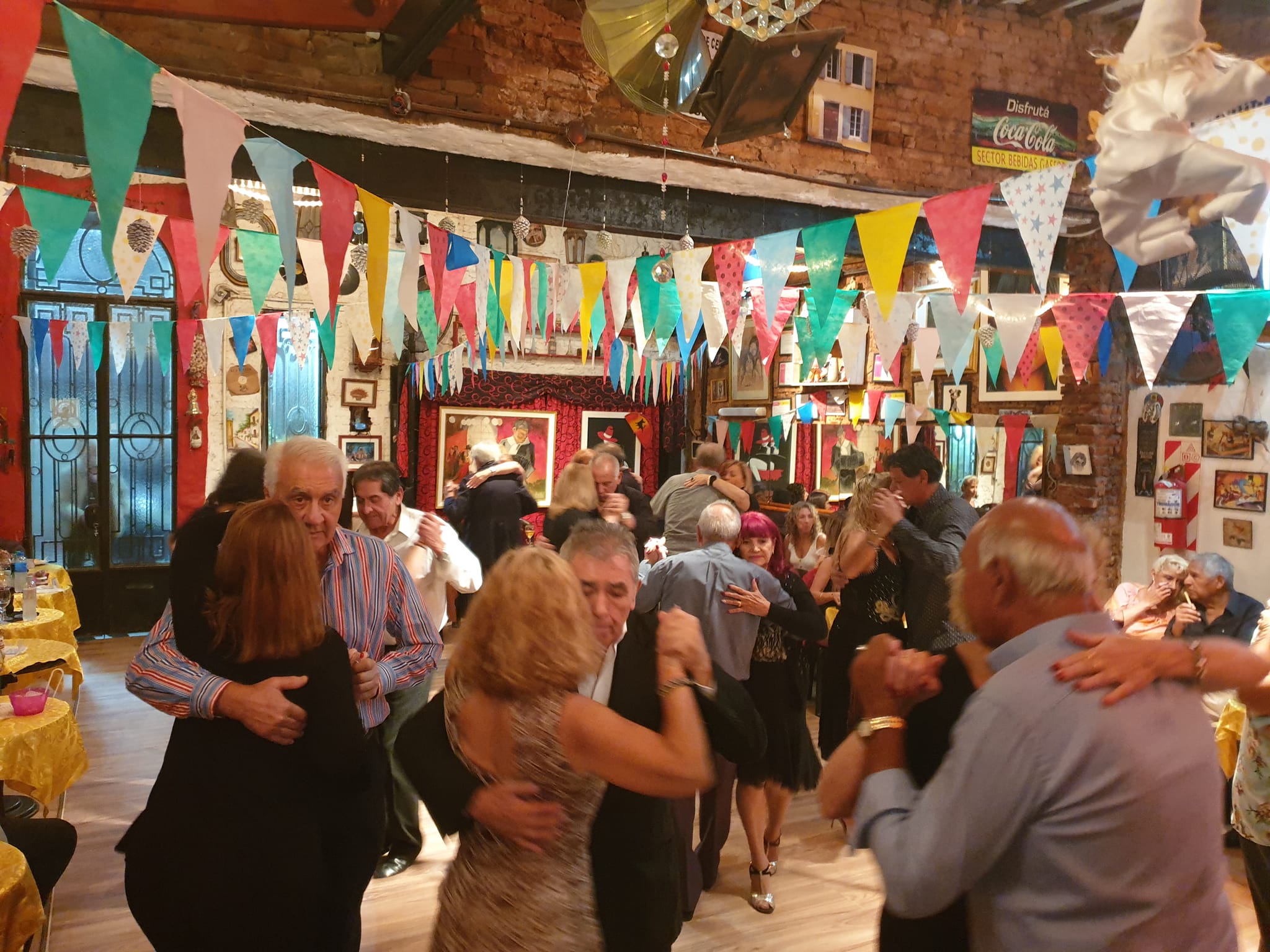

Visiting the milonga with my cousin Noelia and her husband Daniel - great tango & rock 'n roll dancers.

Next blog will be about my visit to Doña Lydia Pugliese.
Photo below taken 27 April 2023 in Lydia Pugliese's house.
In this photo you from left to right:
Rita Ruggiero
She is the widow of Osvaldo Ruggiero, the first bandoneonist of Osvaldo Pugliese's orchestra
Lydia Pugliese
She is the widow of Osvaldo Pugliese (RIP)
Mariano Diaz Campos
Tangodancer, family friend of the Lydia Pugliese y Osvaldo Pugliese (RIP)
Lydia Wisnicki
Family friend of Lydia Pugliese y Osvaldo Pugliese (RIP)

27 April 2023 - Buenos Aires
Rita Ruggiero, Lydia Pugliese, Mariano Diaz Campos, Lydia Wisnicki


